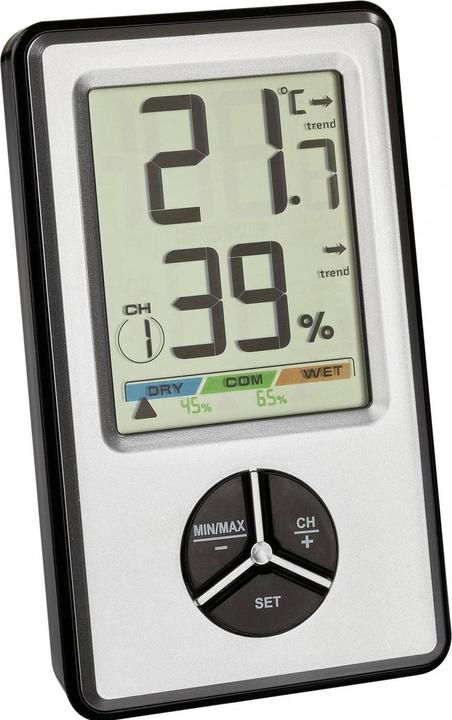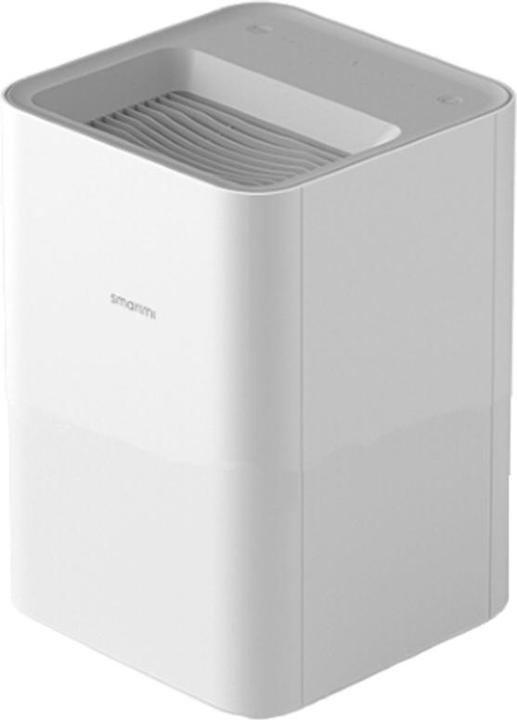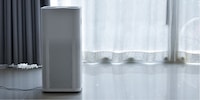

Let off steam with the humidifier buying guide
Humidifiers are designed to help keep the humidity in your home constant in winter. They are useful if you suffer from dry air. However, if used incorrectly, the devices do more harm than good.
A scratchy throat, a blocked nose, dry skin. When you notice these signs, you're quick to blame it on dry indoor air, put a humidifier in and leave it running for days. This is wrong, as you have no idea whether the air in the room is actually too dry. A hygrometer is essential to measure the humidity before buying a humidifier. The Federal Office of Public Health FOPH warns against simply blowing humid air into the home. The risk of unwanted roommates such as mites, mould, bacteria and amoebae is high, especially if you additionally humidify sufficiently humid room air. You are doing more harm to your health than good.
When do I need to humidify the air?
According to the BAG, you should humidify your home when your hygrometer drops below 30%. A humidity level of between 30% and 50% is normal in winter.
Why is the air dry in winter?
Cold air absorbs less moisture than warm air. If you ventilate your home in winter, the cold, dry air flows into your home and the humid air flows outside. The humidity in your home drops. In my case, a quick test with five minutes of forced ventilation brought the air down from 48% to 36% at an outside temperature of 10 degrees. If the temperature outside drops further, the air inside is correspondingly drier.
How do I need the humidifier?
If the humidity is below 30% for a long period of time, you should humidify the air until it has stabilised within the ideal range again. This means you don't need to run the humidifier all the time, but only humidify the air selectively to 40 % until the humidity drops again. Under no circumstances should you do this by feel, but always consult the hygrometer.

Evaporator
Here, the so-called evaporator cassette is filled with water. A fan draws the air through the cassette, which releases moisture into the air. evaporators are very efficient and therefore have low energy consumption. They are not recommended by the FOPH, as they are bacteria and germ spinners. You should therefore clean the filters regularly and thoroughly.
Air scrubbers
These devices draw in air and wash it with water. This traps particles and dust. They differ only slightly from evaporators and have the same problems, namely bacteria and germs that find their way into the air via the water. Regular cleaning and replacing the filter is important.
Ultrasonic nebuliser
As the name suggests, a membrane vibrates with ultrasound and divides the water into tiny droplets. A fan distributes the droplets, which then evaporate. The mist is visible, cold and harmless. These devices also require little power and achieve a lot. As limescale particles also find their way into your home with the water droplets, only decalcified water should be used in the ultrasonic nebuliser. The ultrasound can kill germs and bacteria, but they can still be problematic for allergy sufferers.

Vaporiser
The vaporiser heats the water until germ-free water vapour is produced. This vapour is then distributed throughout the room and humidifies it. These devices are ideal for allergy sufferers. If you use a vaporiser, it should always be equipped with a hygrostat if possible. The vaporiser then stops as soon as the desired humidity level is reached. Vaporisers are very powerful and can quickly make the air too humid if no humidistat is installed. You need to descale these products regularly as the heating plate builds up limescale during use.
You can find the entire range of humidifiers at Galaxus here. <p
When I flew the family nest over 15 years ago, I suddenly had to cook for myself. But it wasn’t long until this necessity became a virtue. Today, rattling those pots and pans is a fundamental part of my life. I’m a true foodie and devour everything from junk food to star-awarded cuisine. Literally. I eat way too fast.
















